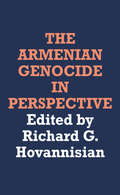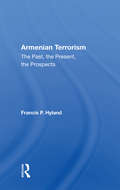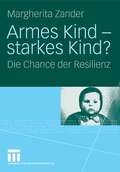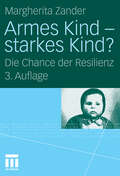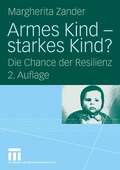- Table View
- List View
The Armenian Genocide: Wartime Radicalization or Premeditated Continuum
by Richard G. HovannisianWorld War I was a watershed, a defining moment, in Armenian history. Its effects were unprecedented in that it resulted in what no other war, invasion, or occupation had achieved in three thousand years of identifiable Armenian existence. This calamity was the physical elimination of the Armenian people and most of the evidence of their ever having lived on the great Armenian Plateau, to which the perpetrator side soon gave the new name of Eastern Anatolia. The bearers of an impressive martial and cultural history, the Armenians had also known repeated trials and tribulations, waves of massacre, captivity, and exile, but even in the darkest of times there had always been enough remaining to revive, rebuild, and go forward.This third volume in a series edited by Richard Hovannisian, the dean of Armenian historians, provides a unique fusion of the history, philosophy, literature, art, music, and educational aspects of the Armenian experience. It further provides a rich storehouse of information on comparative dimensions of the Armenian genocide in relation to the Assyrian, Greek and Jewish situations, and beyond that, paradoxes in American and French policy responses to the Armenian genocides. The volume concludes with a trio of essays concerning fundamental questions of historiography and politics that either make possible or can inhibit reconciliation of ancient truths and righting ancient wrongs.
The Armenian Genocide in Perspective
by Stephen R. GraubardSeven decades after the destruction of the Armenian population in the Ottoman Empire, the Armenian genocide remains largely ignored by governments and forgotten by the world public, even though the annihilation of Armenians was headlined around the world in 1915. Scholarly investigation of the Armenian genocide is just beginning, made more difficult by the tendency of many establishment figures to rationalize the past and the attempt of perpetrator governments and their successors to deny the past.This volume is a pioneering collective attempt to assess and analyze the Armenian genocide from differing perspectives, including history, political science, ethics, religion, literature, and psychiatry. Focusing on the general implications of denial, rationalization, and responsibility, it is particularly important as a precursor to the study of the Holocaust and other genocides.
The Armenian Genocide in Perspective
by Richard G. HovannisianSeven decades after the destruction of the Armenian population in the Ottoman Empire, the Armenian genocide remains largely ignored by governments and forgotten by the world public, even though the annihilation of Armenians was headlined around the world in 1915. Scholarly investigation of the Armenian genocide is just beginning, made more difficult by the tendency of many establishment figures to rationalize the past and the attempt of perpetrator governments and their successors to deny the past.This volume is a pioneering collective attempt to assess and analyze the Armenian genocide from differing perspectives, including history, political science, ethics, religion, literature, and psychiatry. Focusing on the general implications of denial, rationalization, and responsibility, it is particularly important as a precursor to the study of the Holocaust and other genocides.
The Armenian Kingdom in Cilicia During the Crusades: The Integration of Cilician Armenians with the Latins, 1080-1393 (Caucasus World)
by Jacob GhazarianThis unique study bridges the history of the Crusades with the history of Armenian nationalism and Christianity. To the Crusaders, Armenian Christians presented the only reliable allies in Anatolia and Asia Minor, and were pivotal in the founding of the Crusader principalities of Edessa, Antioch, Jerusalem and Tripoli. The Anatolian kingdom of Cilicia was founded by the Roupenian dynasty (mid 10th to late 11th century), and grew under the collective rule of the Hetumian dynasty (late 12th to mid 14th century). After confrontations with Byzantium, the Seljuks and the Mongols, the Second Crusade led to the crowning of the first Cilician king despite opposition from Byzantium. Following the Third Crusade, power shifted in Cilicia to the Lusignans of Cyprus (mid to late 14th century), culminating in the final collapse of the kingdom at the hands of the Egyptian Mamluks.
The Armenian Kingdom in Cilicia During the Crusades: The Integration of Cilician Armenians with the Latins, 1080-1393 (Caucasus World)
by Jacob GhazarianThis unique study bridges the history of the Crusades with the history of Armenian nationalism and Christianity. To the Crusaders, Armenian Christians presented the only reliable allies in Anatolia and Asia Minor, and were pivotal in the founding of the Crusader principalities of Edessa, Antioch, Jerusalem and Tripoli. The Anatolian kingdom of Cilicia was founded by the Roupenian dynasty (mid 10th to late 11th century), and grew under the collective rule of the Hetumian dynasty (late 12th to mid 14th century). After confrontations with Byzantium, the Seljuks and the Mongols, the Second Crusade led to the crowning of the first Cilician king despite opposition from Byzantium. Following the Third Crusade, power shifted in Cilicia to the Lusignans of Cyprus (mid to late 14th century), culminating in the final collapse of the kingdom at the hands of the Egyptian Mamluks.
An Armenian Mediterranean: Words and Worlds in Motion (Mediterranean Perspectives)
by Kathryn Babayan Michael PiferThis book rethinks the Armenian people as significant actors in the context of Mediterranean and global history. Spanning a millennium of cross-cultural interaction and exchange across the Mediterranean world, essays move between connected histories, frontier studies, comparative literature, and discussions of trauma, memory, diaspora, and visual culture. Contributors dismantle narrow, national ways of understanding Armenian literature; propose new frameworks for mapping the post-Ottoman Mediterranean world; and navigate the challenges of writing national history in a globalized age. A century after the Armenian genocide, this book reimagines the borders of the “Armenian,” pointing to a fresh vision for the field of Armenian studies that is omnivorously comparative, deeply interconnected, and rich with possibility.
An Armenian Mediterranean: Words and Worlds in Motion (Mediterranean Perspectives)
by Kathryn Babayan Michael PiferThis book rethinks the Armenian people as significant actors in the context of Mediterranean and global history. Spanning a millennium of cross-cultural interaction and exchange across the Mediterranean world, essays move between connected histories, frontier studies, comparative literature, and discussions of trauma, memory, diaspora, and visual culture. Contributors dismantle narrow, national ways of understanding Armenian literature; propose new frameworks for mapping the post-Ottoman Mediterranean world; and navigate the challenges of writing national history in a globalized age. A century after the Armenian genocide, this book reimagines the borders of the “Armenian,” pointing to a fresh vision for the field of Armenian studies that is omnivorously comparative, deeply interconnected, and rich with possibility.
Armenian Organization and Ideology Under Ottoman Rule: 1908-1914
by Dikran KaligianThis book provides a comprehensive picture of Armeno-Turkish relations for the brief period of Ottoman Constitutional rule between 1908 and 1914. Kaligian integrates internal documents of the Armenian Revolutionary Federation, and existing research on the last years of the empire, as well as the archives of the British, American, and German diplomatic corps. By reducing the overemphasis on central government policies and by describing unofficial contacts, political relations, and provincial administration and conditions, Kaligian provides a unified account of this key period in Ottoman history. Kaligian sets out to resolve many of the conflicting conclusions in the current historiography-including the most central issue, the Armenian Revolutionary Federation relations with the Turkish Committee of Union and Progress. It is impossible to obtain a true picture of Armeno-Turkish relations without an accurate analysis of their two leading parties. This study finds that the ARF was torn between maintaining relations with a CUP that had failed to implement promised reforms and was doing little to prevent increasing attacks on the Armenian population, or break off relations thus ending any realistic chance for the constitutional system to succeed. The party continued to stake its reputation and resources on the success of constitutional government even after the trauma of the 1909 Adana massacres. The decisive issue was the failure of land reform. This book sets the record straight in terms of understanding Armeno-Turkish relations during this short but pivotal period. Kaligian's study, the first of its kind, shows that the party's internal deliberations support the conclusion that it did remain loyal and contradicts the view that the party's only aim was to incite a rebellion against Ottoman rule. The author has done an excellent job of leading the reader through this rich history, using primary source information to bridge the gaps from theory, to analysis, to evidence.
Armenian Organization and Ideology Under Ottoman Rule: 1908-1914
by Dikran KaligianThis book provides a comprehensive picture of Armeno-Turkish relations for the brief period of Ottoman Constitutional rule between 1908 and 1914. Kaligian integrates internal documents of the Armenian Revolutionary Federation, and existing research on the last years of the empire, as well as the archives of the British, American, and German diplomatic corps. By reducing the overemphasis on central government policies and by describing unofficial contacts, political relations, and provincial administration and conditions, Kaligian provides a unified account of this key period in Ottoman history. Kaligian sets out to resolve many of the conflicting conclusions in the current historiography-including the most central issue, the Armenian Revolutionary Federation relations with the Turkish Committee of Union and Progress. It is impossible to obtain a true picture of Armeno-Turkish relations without an accurate analysis of their two leading parties. This study finds that the ARF was torn between maintaining relations with a CUP that had failed to implement promised reforms and was doing little to prevent increasing attacks on the Armenian population, or break off relations thus ending any realistic chance for the constitutional system to succeed. The party continued to stake its reputation and resources on the success of constitutional government even after the trauma of the 1909 Adana massacres. The decisive issue was the failure of land reform. This book sets the record straight in terms of understanding Armeno-Turkish relations during this short but pivotal period. Kaligian's study, the first of its kind, shows that the party's internal deliberations support the conclusion that it did remain loyal and contradicts the view that the party's only aim was to incite a rebellion against Ottoman rule. The author has done an excellent job of leading the reader through this rich history, using primary source information to bridge the gaps from theory, to analysis, to evidence.
Armenian Terrorism: The Past, The Present, The Prospects
by Francis P HylandArising seemingly out of nowhere, Armenian terrorist groups in the last two decades have carried out over 200 attacks in some two dozen countries around the world. Although this wave of terror at first appears to have sprung up without warning, a closer look at Armenian history, especially since World War I, shows that it is only the most recent in a series of outbreaks of ethnic violence. In this study, the author examines the social and political background of Armenian terrorism and its similarities to and differences from other terrorist movements, and he carefully dissects the organizational methods of these groups. An important feature of the work is an extensive and detailed chronology of Armenian terrorism from 1915 to the present. Each entry provides essential information concerning the date and time of the attack, location, victims, weapons used, terrorist groups and individual commandos responsible for the attack, and a list of sources for further reference. A resource for specialists studying terrorism and ethnic violence, "Armenian Terrorism" should also be useful to those interested in the tragic and difficult history of Armenia and Turkey.
Armenian Terrorism: The Past, The Present, The Prospects
by Francis P HylandArising seemingly out of nowhere, Armenian terrorist groups in the last two decades have carried out over 200 attacks in some two dozen countries around the world. Although this wave of terror at first appears to have sprung up without warning, a closer look at Armenian history, especially since World War I, shows that it is only the most recent in a series of outbreaks of ethnic violence. In this study, the author examines the social and political background of Armenian terrorism and its similarities to and differences from other terrorist movements, and he carefully dissects the organizational methods of these groups. An important feature of the work is an extensive and detailed chronology of Armenian terrorism from 1915 to the present. Each entry provides essential information concerning the date and time of the attack, location, victims, weapons used, terrorist groups and individual commandos responsible for the attack, and a list of sources for further reference. A resource for specialists studying terrorism and ethnic violence, "Armenian Terrorism" should also be useful to those interested in the tragic and difficult history of Armenia and Turkey.
Armenians And The Iranian Constitutional Revolution Of 1905-1911: The Love For Freedom Has No Fatherland
by Houri BerberianDrawing upon original sources, this study provides the most comprehensive treatment to date of the issue of Armenian politicization and participation in the Iranian Constitutional Revolution (1905-1911). Houri Berberian traces the political, economic, and social situation of Armenians in the nineteenth century with a special emphasis on the Armenian provinces of the Ottoman Empire, which became the focus of the Armenian revolutionary movement in the late nineteenth century, and on the Russian-ruled Caucasus, which became the source of the nationalist and socialist revolutionary movement. Discussion of the Iranian Armenian community includes, for the first time, a look into the roles and activism of Iranian Armenian women. Berberian explores the ideological, political, and pragmatic motivations of Armenians, and examines the collaboration of Armenian and Iranian constitutionalists, drawing attention to the ideological and military contributions of Armenians to the revolution as well as to the internal and external conflicts among Armenian activists and between Armenian and Iranian constitutionalist elements. Berberian concludes with a discussion of the causes and consequences of the retreat of Armenians from Iranian politics.
The Armenians in the Medieval Islamic World: Medieval Cosmopolitanism and Images of Islamthirteenth to Fourteenth Centuries (Armenian Studies)
by Seta B. DadoyanIn the third volume of the trilogy, Seta B. Dadoyan focuses on social and cultural aspects, rather than the core political focus exhibited in her first two volumes. Her objective is to suggest political readings of these themes and related texts by revealing hitherto unstudied and novel interactions in the cities of Asia Minor during the Mongol Period.Dadoyan focuses on the Armenian condition and role in the medieval Islamic world. She argues that if the entire region was the habitat of most of the Armenians, their history too is part of these locations and peoples. Dadoyan draws the outlines of a new philosophy of Armenian history based on hitherto obscured patterns of interaction.The first three chapters of this volume are dedicated to the images of Prophet Muhammad in Armenian literature. Dadoyan shows that direct interactions and borrowings happened regularly from Islamic sciences, reform projects, poetry, and arts. Dadoyan argues that the cosmopolitan urban environments were radically different from rural areas and close interactions took different and unexpected patterns. In the last part of the volume, she presents the first and only polemical-apologetic Armenian texts addressed to Islam at the end of the fourteenth century. This book is essential for all historians and Middle East scholars and is the latest volume in Transaction's Armenian Studies series.
The Armenians in the Medieval Islamic World: Medieval Cosmopolitanism and Images of Islamthirteenth to Fourteenth Centuries
by Seta B. DadoyanIn the third volume of the trilogy, Seta B. Dadoyan focuses on social and cultural aspects, rather than the core political focus exhibited in her first two volumes. Her objective is to suggest political readings of these themes and related texts by revealing hitherto unstudied and novel interactions in the cities of Asia Minor during the Mongol Period.Dadoyan focuses on the Armenian condition and role in the medieval Islamic world. She argues that if the entire region was the habitat of most of the Armenians, their history too is part of these locations and peoples. Dadoyan draws the outlines of a new philosophy of Armenian history based on hitherto obscured patterns of interaction.The first three chapters of this volume are dedicated to the images of Prophet Muhammad in Armenian literature. Dadoyan shows that direct interactions and borrowings happened regularly from Islamic sciences, reform projects, poetry, and arts. Dadoyan argues that the cosmopolitan urban environments were radically different from rural areas and close interactions took different and unexpected patterns. In the last part of the volume, she presents the first and only polemical-apologetic Armenian texts addressed to Islam at the end of the fourteenth century. This book is essential for all historians and Middle East scholars and is the latest volume in Transaction's Armenian Studies series.
The Armenians in the Medieval Islamic World: The Arab Period in Armnyahseventh to Eleventh Centuries
by Seta B. DadoyanIn this first of a massive three-volume work, Seta B. Dadoyan studies the Armenian experience in the medieval Islamic world and takes the reader through hitherto undiscovered paradigmatic cases of interaction with other populations in the region. Being an Armenian, Dadoyan argues, means having an ethnic ancestry laden with narratives drawn from the vast historic Armenian habitat. Contradictory trends went into the making of Armenian history, yet most narratives fail to reflect this rich texture. Linking Armenian-Islamic history is one way of dealing with the problem. Dadoyan's concern is also to outline revolutionary elements in the making of Armenian ideologies and politics. This extensive work captures the multidimensional nature of the Armenian experience in the medieval Islamic world. The author holds that every piece of literature, including historical writing, is an artifact. It is a composition of many elements arranged in certain forms: order, sequence, proportion, detail, intensity, etc. The author has composed and arranged the larger subjects and their sub-themes in such a way as to create an open, dynamic continuity to Armenian history that is intellectually intriguing, aesthetically appealing, and close to lived experiences.
The Armenians in the Medieval Islamic World: Armenian Realpolitik in the Islamic World and Diverging Paradigmscase of Cilicia Eleventh to Fourteenth Centuries
by Seta B. DadoyanIn the second of a three-volume work, Seta B. Dadoyan explores the Armenian condition from the 970s to the end of the fourteenth century. This period marked the gradual loss of semi-autonomy on the traditional mainland and the rise of Armenian power of diverging patterns in southeastern Asia Minor, north Syria, Cilicia, and Egypt. Dadoyan's premise is that if Armenians and Armenia have always been located in the Middle East and the Islamic world, then their history is also a natural part of that region and its peoples. She observes that the Armenian experience has been too complicated to be defined by simplistic constructs centered on the idea of a heroic, yet victimized nation. She notes that a certain politics of historical writing, supported by a culture of authority, has focused sharply on episodes and, in particular, on the genocide. For her sources, Dadoyan has used all available and relevant (primary and secondary) Armenian sources, as well as primary Arab texts and sources. This book will stimulate re-evaluation of the period, and re-conceptualizing Armenian and Middle Eastern histories.
The Armenians in the Medieval Islamic World: Armenian Realpolitik in the Islamic World and Diverging Paradigmscase of Cilicia Eleventh to Fourteenth Centuries
by Seta B. DadoyanIn the second of a three-volume work, Seta B. Dadoyan explores the Armenian condition from the 970s to the end of the fourteenth century. This period marked the gradual loss of semi-autonomy on the traditional mainland and the rise of Armenian power of diverging patterns in southeastern Asia Minor, north Syria, Cilicia, and Egypt. Dadoyan's premise is that if Armenians and Armenia have always been located in the Middle East and the Islamic world, then their history is also a natural part of that region and its peoples. She observes that the Armenian experience has been too complicated to be defined by simplistic constructs centered on the idea of a heroic, yet victimized nation. She notes that a certain politics of historical writing, supported by a culture of authority, has focused sharply on episodes and, in particular, on the genocide. For her sources, Dadoyan has used all available and relevant (primary and secondary) Armenian sources, as well as primary Arab texts and sources. This book will stimulate re-evaluation of the period, and re-conceptualizing Armenian and Middle Eastern histories.
The Armenians in the Medieval Islamic World: The Arab Period in Armnyahseventh to Eleventh Centuries (Armenian Studies)
by Seta B. DadoyanIn this first of a massive three-volume work, Seta B. Dadoyan studies the Armenian experience in the medieval Islamic world and takes the reader through hitherto undiscovered paradigmatic cases of interaction with other populations in the region. Being an Armenian, Dadoyan argues, means having an ethnic ancestry laden with narratives drawn from the vast historic Armenian habitat. Contradictory trends went into the making of Armenian history, yet most narratives fail to reflect this rich texture. Linking Armenian-Islamic history is one way of dealing with the problem. Dadoyan's concern is also to outline revolutionary elements in the making of Armenian ideologies and politics. This extensive work captures the multidimensional nature of the Armenian experience in the medieval Islamic world. The author holds that every piece of literature, including historical writing, is an artifact. It is a composition of many elements arranged in certain forms: order, sequence, proportion, detail, intensity, etc. The author has composed and arranged the larger subjects and their sub-themes in such a way as to create an open, dynamic continuity to Armenian history that is intellectually intriguing, aesthetically appealing, and close to lived experiences.
The Armenians of Aintab: The Economics of Genocide in an Ottoman Province
by Ümit KurtA Turk’s discovery that Armenians once thrived in his hometown leads to a groundbreaking investigation into the local dynamics of genocide. Ümit Kurt, born and raised in Gaziantep, Turkey, was astonished to learn that his hometown once had a large and active Armenian community. The Armenian presence in Aintab, the city’s name during the Ottoman period, had not only been destroyed—it had been replaced. To every appearance, Gaziantep was a typical Turkish city. Kurt digs into the details of the Armenian dispossession that produced the homogeneously Turkish city in which he grew up. In particular, he examines the population that gained from ethnic cleansing. Records of land confiscation and population transfer demonstrate just how much new wealth became available when the prosperous Armenians—who were active in manufacturing, agricultural production, and trade—were ejected. Although the official rationale for the removal of the Armenians was that the group posed a threat of rebellion, Kurt shows that the prospect of material gain was a key motivator of support for the Armenian genocide among the local Muslim gentry and the Turkish public. Those who benefited most—provincial elites, wealthy landowners, state officials, and merchants who accumulated Armenian capital—in turn financed the nationalist movement that brought the modern Turkish republic into being. The economic elite of Aintab was thus reconstituted along both ethnic and political lines. The Armenians of Aintab draws on primary sources from Armenian, Ottoman, Turkish, British, and French archives, as well as memoirs, personal papers, oral accounts, and newly discovered property-liquidation records. Together they provide an invaluable account of genocide at ground level.
Armenia's Future, Relations with Turkey, and the Karabagh Conflict
by Levon Ter-PetrossianThis project addresses recurring questions about Armenian-Turkish relations, the legacy of the Armenian genocide of 1915, and relations between the Armenian diaspora and the Republic of Armenia. Additionally, it discusses the ongoing conflict with Azerbaijan, and the Armenian government’s handling of the commemoration of the one-hundredth anniversary of the Armenian genocide.
Armes Kind - starkes Kind?: Die Chance der Resilienz
by Margherita ZanderDas Buch bietet einen fundierten Einblick in die international viel diskutierte und neuerdings auch in Deutschland lebhaft verfolgte Resilienzforschung. „Resilienz“ bedeutet „seelische Widerstandsfähigkeit“ in belasteten und risikobehafteten Lebenssituationen. Aufwachsen in Armut ist ein zentrales Entwicklungsrisiko für Kinder. Wichtigste Erkenntnis ist, dass „Resilienz“durch pädagogisches und sozialpädagogisches Handeln gefördert werden kann. Bisher fehlte jedoch eine theoretisch fundierte Begründung und eine substanzielle fachliche Erörterung, wie sich das Resilienzkonzept für Kinder und Familien in Armutslagen übertragen und anwenden lässt. Diese Lücke schließt das Buch.
Armes Kind - starkes Kind?: Die Chance der Resilienz
by Margherita ZanderDas Buch bietet einen fundierten Einblick in die international viel diskutierte und neuerdings auch in Deutschland lebhaft verfolgte Resilienzforschung. „Resilienz“ bedeutet „seelische Widerstandsfähigkeit“ in belasteten und risikobehafteten Lebenssituationen. Aufwachsen in Armut ist ein zentrales Entwicklungsrisiko für Kinder. Wichtigste Erkenntnis ist, dass „Resilienz“ durch pädagogisches und sozialpädagogisches Handeln gefördert werden kann. Bisher fehlte jedoch eine theoretisch fundierte Begründung und eine substanzielle fachliche Erörterung, wie sich das Resilienzkonzept für Kinder und Familien in Armutslagen übertragen und anwenden lässt. Diese Lücke schließt das Buch.
Armes Kind - starkes Kind?: Die Chance der Resilienz
by Margherita ZanderDas Buch bietet einen fundierten Einblick in die international viel diskutierte und neuerdings auch in Deutschland lebhaft verfolgte Resilienzforschung. „Resilienz“ bedeutet „seelische Widerstandsfähigkeit“ in belasteten und risikobehafteten Lebenssituationen. Aufwachsen in Armut ist ein zentrales Entwicklungsrisiko für Kinder. Wichtigste Erkenntnis ist, dass „Resilienz“ durch pädagogisches und sozialpädagogisches Handeln gefördert werden kann. Bisher fehlte jedoch eine theoretisch fundierte Begründung und eine substanzielle fachliche Erörterung, wie sich das Resilienzkonzept für Kinder und Familien in Armutslagen übertragen und anwenden lässt. Diese Lücke schließt das Buch.
Armies of the Poor: Determinants of Working-class Participation in in the Parisian Insurrection of June 1848
by Mark TraugottIn June 1848, two irregular armies of the urban poor fought a four-day battle in the streets of Paris that decided the fate of the French Second Republic. The Parisian National Workshops and the Parisian Mobile Guard-organizations newly created at the time of the February Revolution-provided the bulk of the June combatants associated with the insurrection and repression, respectively. According to Marx's simple and compelling hypothesis, a nascent French proletariat unsuccessfully attempted to assert its political and social rights against a coalition of the bourgeoisie and lumpenproletariat, represented by the Parisian Mobile Guard. Through a detailed study of archival sources, Mark Traugott challenges this interpretation of these events and proposes an organizational explanation.Research has consistently shown that skilled artisans and not unskilled proletarians stood at the forefront of the revolutionary struggles of the nineteenth century. Traugott compares the social identities of the main participants on opposite sides of the conflict and sorts out the reasons for the political alignments observed. Drawing on work by Charles Tilly and Lynn Lees, Traugott demonstrates that the insurgents were not highly proletarianized workers, but rather members of the highly skilled trades predominant in the Parisian economy. Meanwhile, those who spearheaded the repression were little different in occupational status, though they tended to be significantly younger. Traugott's ""organizational hypothesis"" makes sense of the observed configuration of forces. He accounts for the age differential as a by-product of the recruitment criteria that Mobile Guard volunteers were required to meet. Finally, he explains why class position creates no more than a diffuse political predisposition that remains subject to the influence of situation-specific factors such as organizational affiliations. Armies of the Poor helps clarify our understanding of the dynamic at work in the insurrectiona
Armies of the Poor: Determinants of Working-class Participation in in the Parisian Insurrection of June 1848
by Mark TraugottIn June 1848, two irregular armies of the urban poor fought a four-day battle in the streets of Paris that decided the fate of the French Second Republic. The Parisian National Workshops and the Parisian Mobile Guard-organizations newly created at the time of the February Revolution-provided the bulk of the June combatants associated with the insurrection and repression, respectively. According to Marx's simple and compelling hypothesis, a nascent French proletariat unsuccessfully attempted to assert its political and social rights against a coalition of the bourgeoisie and lumpenproletariat, represented by the Parisian Mobile Guard. Through a detailed study of archival sources, Mark Traugott challenges this interpretation of these events and proposes an organizational explanation.Research has consistently shown that skilled artisans and not unskilled proletarians stood at the forefront of the revolutionary struggles of the nineteenth century. Traugott compares the social identities of the main participants on opposite sides of the conflict and sorts out the reasons for the political alignments observed. Drawing on work by Charles Tilly and Lynn Lees, Traugott demonstrates that the insurgents were not highly proletarianized workers, but rather members of the highly skilled trades predominant in the Parisian economy. Meanwhile, those who spearheaded the repression were little different in occupational status, though they tended to be significantly younger. Traugott's ""organizational hypothesis"" makes sense of the observed configuration of forces. He accounts for the age differential as a by-product of the recruitment criteria that Mobile Guard volunteers were required to meet. Finally, he explains why class position creates no more than a diffuse political predisposition that remains subject to the influence of situation-specific factors such as organizational affiliations. Armies of the Poor helps clarify our understanding of the dynamic at work in the insurrectiona

